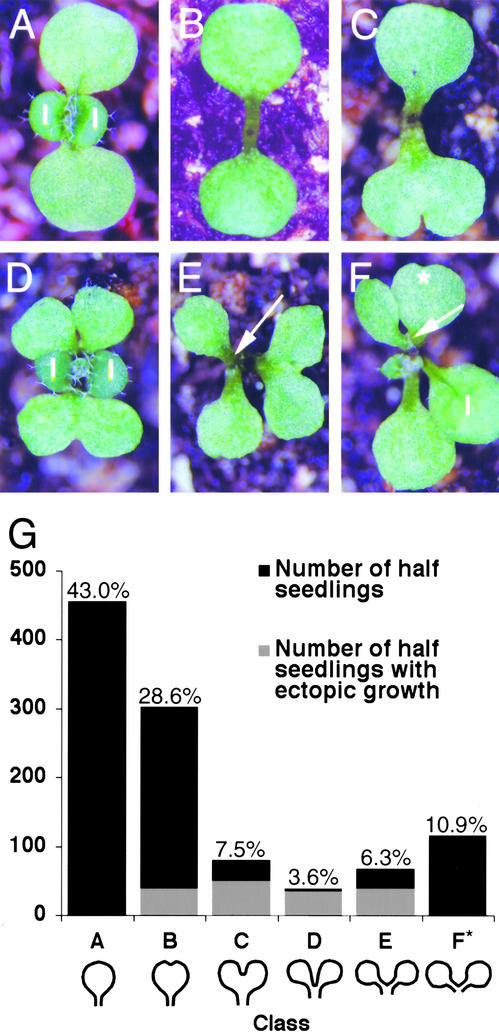Figure 5.
Phenotypes of pnh-2; FIL::PNH Transformants.
(A) Wild-type seedling showing normal cotyledon shape. l, leaf.
(B) pnh-2 seedling with normal cotyledon morphology.
(C) to (F) pnh-2; FIL::PNH seedlings displaying the variable cotyledon phenotypes. Note the ectopic meristem formation (arrows). The double cotyledon in (F) has indentations in the two new cotyledons, as if a second round of doubling was initiated (star).
(G) Frequency of pnh-2; FIL::PNH cotyledon phenotypes and ectopic growth formation. Two- or 3-week-old seedlings from three independent transformed lines were examined, with similar results for each experiment except as discussed in the text. Cotyledon phenotypes were divided into six classes as follows: A, normal; B, indentation with most of blade fused (bottom cotyledon in [C]); C, notched with most of blade separate (cotyledon at right in [E]); D, blades completely separate but petiole fused (top cotyledon in [D]); E, petiole partially separate (top cotyledon in [F]); F, completely separate petiole and blade (cotyledon at left in [E]). Percentages refer to percent of total half-seedlings examined with that phenotype. * Cotyledons in class F could not be scored for ectopic growth formation (see text).

